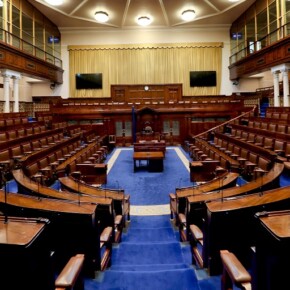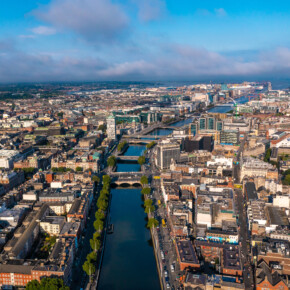Portrane swim ban remains a concern for local community
Padraig Conlon 24 Aug 2020
THE public health notice currently at Portrane beach advising against swimming in the sea for the entire 2020 bathing season is a matter of huge concern for the local community.
That’s according to Social Democrats Councillor for Rush-Lusk, Paul Mulville, who says that while he welcomes the action plan for the beach, the swim ban remains “a concern.”
“I welcome confirmation from Fingal County Council management that they have put in place an action plan to address bathing water issues in Portrane,” he said.
“However, it must not just sit on the shelf as this issue deserves priority action.
“This advisory notice is in place despite the fact that every water quality sample taken this year at Portrane has been classified as ‘excellent’, even as recently as July 27.
“The reason given for this restriction is because the beach was classified as having poor water quality following the 2019 bathing season.
“However, looking at the publicly available water quality results going right back to May 2015, out of the 80 water samples taken since then, 53 were classified as ‘excellent’, 21 were ‘good’ and only six were classified as ‘poor’. The last ‘poor’ result was in July 2018.
“This isn’t an excuse, though, and the council management, as well as other statutory authorities, must urgently follow through with the enforcement actions and network repairs outlined in their recent response to me.”
Northside People contacted Fingal County Council to ask them what plan they have to address the bathing water issues in Portrane and why the water is classed as ‘poor’ when the last similar result for the beach was logged in July 2018.
A spokesperson from Fingal County Council said: “We were required to post a bathing restriction notice for the 2020 bathing season and prepare a beach management plan for The Brook Beach, Portrane due to its classification status as ‘Poor’ by the Environmental Protection Agency (EPA).
“This EPA classification is determined on the assessment of four years of water quality data – 2016, 2017, 2018 and 2019 – and not just the results of the previous bathing season.
“As it is a statistical assessment of the data the impact of one abnormally high microbiological result in 2016 (‘poor’ result) has impacted the overall assessment outcome for this bathing water.
“During the period 2016 to 2019, there were a total of 37 samples analysed for bathing water quality,” the spokesperson for the council added.
“Of these, three were classified as ‘Poor’ and the remaining 34 samples classified as ‘Good’ or ‘Excellent’.
“In relation to the pollution pressures in this environment and current measures being addressed the following summary applies:
“Eight properties have been identified as not connected to sewer and not registered on the national database for onsite wastewater treatment units – these are being investigated, and enforcement action will be taken where required.
“UCD has found faecal indicator bacteria (80% are human markers (sewage)) in a pipe located near the bathing water.
“This surface water pipe discharges near the bathing water compliance point and it is proposed to test both locations over a 12-hour period to see if this pipe is affecting bathing water quality at the compliance point.
“Investigations are progressing upstream of this pipe and have ruled out certain locations. Properties may have misconnected their foul drains to the surface water network instead of the foul.
“Contaminated surface water (sewage) is a likely source for this pollution (examination of the nearby Seaview housing estate surface water network being monitored next).
“Visual inspections of the network and CCTV surveys will enable us to locate the primary route of this source of pollution to a section/branch on the surface water network and dye tests can be carried out within dwellings to pinpoint its exact location.”











